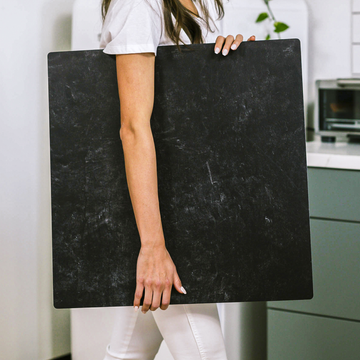Have you ever wondered why your food photos don't quite match those stunning professional shots you see in magazines? While everyone talks about lighting and composition, I'm about to share a game-changing secret from my 15 years as a professional food photographer: it's all about temperature control.
The Temperature Dance: Why It Matters
Think about your favorite food photos. That perfectly melted cheese stretch? Those wisps of steam rising from a hot coffee? That ice cream scoop that looks impossibly smooth? None of these happen by accident. They're the result of precise temperature management that most photographers never consider.
Let me introduce you to what I call "The Three-Zone System" - a framework I've developed over countless commercial shoots.
Hot Zone: Where the Magic Happens (>140°F)
Picture this: You're shooting a chocolate lava cake. Too hot, and your chocolate becomes a messy puddle. Too cool, and you lose that Instagram-worthy molten center. The hot zone is where we capture:
- Rising steam
- Melting elements
- Foods that need that "just-cooked" look
Pro Tip: I use professional heat lamps with Kelvin controls, but you can achieve similar results at home with a carefully positioned cooking light and a digital thermometer.
The Crucial Transition Zone (90-140°F)
This is where the real artistry happens. It's like catching a butterfly mid-flight - you have precious moments to capture food as it transforms. Think:
- Cheese pulls at the perfect temperature
- Butter slowly melting on hot pancakes
- Chocolate reaching that perfect glossy state
The Cold Zone: Structure is Everything (<90°F)
Ever tried photographing ice cream on a summer day? Then you know the importance of the cold zone. This is where we:
- Maintain structural integrity
- Prevent unwanted melting
- Keep garnishes fresh and crisp
Behind the Scenes: Professional Secrets
Let me share some of my favorite tricks from years of commercial shoots.
Ice Cream Shoots
Instead of frantically racing against time, I use a modified CPU cooling system to maintain ice cream at exactly 20°F. No more melting disasters! Don't have professional equipment? Try this hack: place your ice cream bowl on a frozen gel pack wrapped in a black cloth (to avoid unwanted reflections).
Steam Shots
Here's something most people don't know: steam visibility depends on your room's dew point. I use a precision steam generator, but you can create beautiful steam shots by:
- Heating water to exactly 212°F
- Using a black background
- Controlling air circulation (turn off that AC!)
The Science of Sequencing
One of the biggest mistakes I see? Random shooting order. Instead, always:
- Start with cold-dependent items while they're perfect
- Move to room temperature subjects
- Finish with hot items that need immediate shooting
Final Thoughts
After years behind the camera, I can tell you that understanding temperature control has transformed my food photography more than any fancy camera or lighting setup. It's the difference between hoping for a good shot and knowing you'll get one.
What temperature-related challenges are you facing in your food photography? Share your experiences in the comments below - I'd love to help you troubleshoot!
Remember: Great food photography is a science as much as an art. Master the temperature, master the shot.



